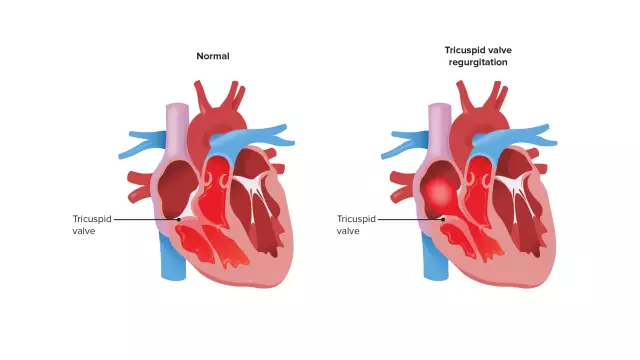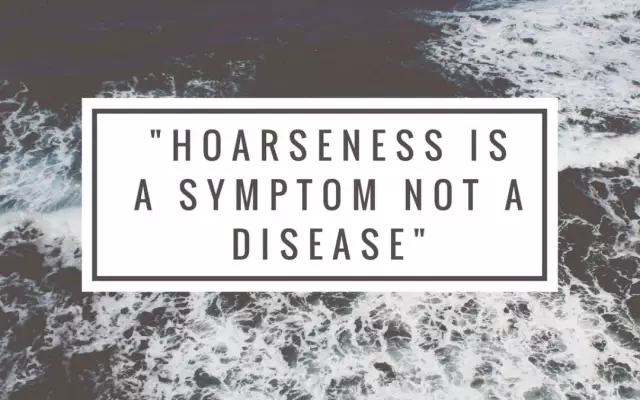- Author Rachel Wainwright [email protected].
- Public 2023-12-15 07:39.
- Last modified 2025-11-02 20:14.
Oligophrenia
General characteristics of the disease

Oligophrenia is a congenital or acquired dementia at an early age. It is expressed in the general underdevelopment of the psyche and primarily affects the human intellect. The term "oligophrenia" comes from two Greek words "oligos" (small) and "phrēn" (mind), although the expressions "mental retardation" or "mental deficiency" are considered more correct. In everyday life, mental retardation in children is often called mental retardation, and the child with mental retardation is often called retarded.
Oligophrenia, as a separate disease, was classified only at the beginning of the last century. Until this time, the general collective term "dementia" combined patients with both congenital illness and acquired mental underdevelopment, for example, senile dementia.
The causes of oligophrenia
There are three groups of factors that provoke the development of the disease:
The first complex of causes of oligophrenia has an endogenous (internal) character. This includes all types of mental underdevelopment caused by chromosomal pathologies, various genetic syndromes and hereditary specific metabolic disorders. The cause of this type of oligophrenia can be the syndrome of Klinefelter, Shereshevsky-Turner, Rubinstein-Teibi, Down's disease, different types of mucopolysaccharidosis and other metabolic diseases.
The second set of causes of oligophrenia consists of exogenous factors, i.e. external, etiology. In this case, general mental underdevelopment in a patient can cause intrauterine infections during pregnancy, immuno-conflict between the blood of the mother and the child, birth and postpartum trauma to the baby's skull, mother's alcoholism, drug addiction and other addictions that provoke serious disturbances in the supply of the fetus with nutrients.
The complex of causes of oligophrenia of mixed etiology consists of factors of both exogenous and endogenous nature. As a result of the cumulative effect of several adverse factors on the human body at once, the most severe forms of oligophrenia develop.
Forms of oligophrenia
Each complex of causes of oligophrenia corresponds to a separate form of the disease. In total, at the moment, it is customary to distinguish 4 forms of oligophrenia:
I form of oligophrenia is a hereditary variant of the disease caused by defective generative cells of the patient's parents. The I form of oligophrenia includes patients with Down's disease, microcephaly and mental underdevelopment against the background of serious pathologies of the skin and bones of a person.
II form of oligophrenia - various types of embryo and fetopathies. The II form of oligophrenia includes the types of mental underdevelopment caused by intrauterine factors: viral, bacterial or parasitic infections of a woman during pregnancy, hemolytic diseases of the fetus.
III form of oligophrenia - mental retardation in a child, provoked by birth trauma, hypoxia or asphyxia during childbirth, as well as encephalitis, meningitis, or serious traumatic brain injury suffered at the age of 3 years.
And the last VI form of oligophrenia is a type of mental underdevelopment caused by the progression of the main congenital disease, for example, various brain defects or endocrine pathologies.
Degrees of oligophrenia
Depending on the severity of the mental defect and the IQ of the patient, there are 3 degrees of oligophrenia:
Mild mental retardation is usually called debility. In patients with this degree of oligophrenia, the IQ is in the range of 50-70 points. Patients have a fairly developed speech, they can perform simple arithmetic operations (add, subtract, count money). Their range of interests is limited to everyday issues. Patients with a mild degree of mental retardation do not show interest in learning and demonstrate a complete inability to abstract thinking. They are able to learn the rules of social behavior and the skills of primitive monotonous manual labor.
Imbecility is a degree of oligophrenia with moderate severity of intellectual underdevelopment. The intelligence quotient of these people is from 20 to 49 points. Patients with this degree of oligophrenia are tongue-tied. Their vocabulary consists of several dozen words. With this degree of oligophrenia, a person retains the ability to self-service, but the patient is often unable to perform the most primitive industrial work.
Idiocy is the degree of oligophrenia with the deepest mental retardation. Patients in this group have an IQ of less than 20 points. Thinking with a deep degree of oligophrenia is practically undeveloped. Patients do not understand well the speech addressed to them. Their communication with others is limited to the manifestation of emotions of pleasure or displeasure. Patients lack self-care skills and are completely dependent on their caregivers.
Diagnostics of the oligophrenia
Some forms of oligophrenia caused by genetic factors can today be diagnosed even at the stage of intrauterine development. In this case, the question of the possibility of artificial termination of pregnancy is decided.
Oligophrenia in children of the first year of life is diagnosed on the basis of a whole complex of symptoms of physical and mental developmental delays. Oligophrenia in young children is expressed in the inability of a child to hold his head, sit, fix his gaze at one point, turn his head at a sound, smile or walk at a speech addressed to him.
Oligophrenia in children of the second year of life is manifested in the absence of a desire to learn about the environment, in the underdevelopment of speech and motor skills. The child does not understand the speech addressed to him and does not try to imitate the actions of adults. At the earliest age, as a rule, the most severe degrees of oligophrenia are diagnosed.
In the preschool period, a mild degree of oligophrenia in children is expressed in poorly developed speech, the predominance of primitive emotions, poor learning ability and inability to self-service.
Treatment of oligophrenia

To identify various forms of oligophrenia in children around the world, there is a patronage system for monitoring the physical and mental development of a child from birth to his placement in school. Unfortunately, treatment of the disease is possible only in children with metabolic oligophrenia. In this case, the child is prescribed drugs to correct the metabolism, and the further development of the disease depends on the child's body's susceptibility to treatment.
With all other forms of oligophrenia in children, it is possible to carry out only auxiliary therapy with vitamin complexes, amino acids, nootropics, drugs to stimulate cerebral circulation and reduce intracranial pressure.
The diagnosis of "oligophrenia" in children involves the child's participation in a social rehabilitation program. With mild and moderate mental retardation, patients are sent to specialized kindergartens and boarding schools. There they receive education at about the level of 4 grades of a regular school and at the same time are trained in a profession. After graduating from the boarding school, most of the graduates find jobs. For all forms of oligophrenia, patients are granted disability and a cash benefit is assigned.
YouTube video related to the article:
The information is generalized and provided for informational purposes only. At the first sign of illness, see your doctor. Self-medication is hazardous to health!






